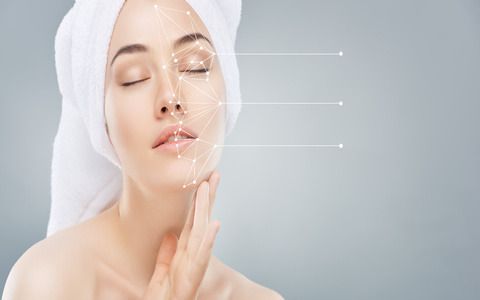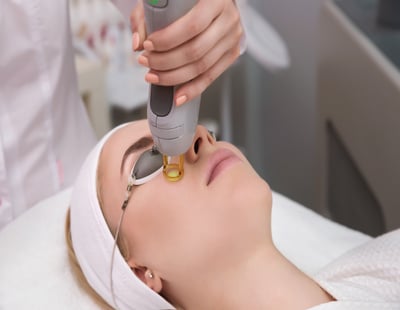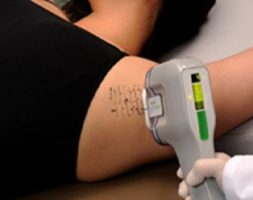
The inevitable skin ageing process is a result of the gradual reduction in the fibroblasts’ (skin cells) ability to produce collagen, elastin and hyaluronic acid.
From around 20 years of age, every woman loses on average 1% of her collagen each year.
The skin becomes thinner, dryer, rougher and the complexion dull, as lines and wrinkles start to appear.
Until a few years ago, laser photo rejuvenation used ablative lasers, which removed one or several layers of skin, thus necessitating a recovery period or ‘down time’. The introduction of non-ablative lasers has changed working methods, as these lasers transmit heat energy directly into the dermis, without damaging the epidermis above.
INDICATIONS

Suitable for all skin types.
It can treat the body (notably the arms, the buttocks, the stomach and the lower limbs), the face, the neck and the décolletage.
There is no age limit. The treatment can be used on both young and older patients.
The uses are:
– Improvement in loose, sagging skin: improved definition of facial contours.
– Improved skin density: the skin is more energised and lifted.
– Improved skin texture: this can treat solar elastosis, gives a healthy glow, and a more hydrated skin.
– Improvement in lines and wrinkles.
SESSION
Before the session, your doctor checks the absence of contraindications (tanning, recent exposure to sunlight, taking medication, etc.).
Your eyes are protected by glasses adapted to the wavelength of the laser.I regulate the energy and shot-time (the shot time is the duration during which energy is given by each laser shot) depending on the skin type and the damage. I can regulate the shot-time by an order of 0.1ms, allowing me to destroy pigmentary and vascular micro imperfections in the skin.

SIDE EFFECTS
No recovery time: you can wear make-up immediately after the session.
Light redness for 2 or 3 hours.
Ignoring advice about avoiding the sun can lead to temporary hypo/hyperpigmentation which lasts, about 3 months on average.
Testimonials-reviews
A. CHARLEY
M. BAKER
O. CLERKE
R. COALMAN



